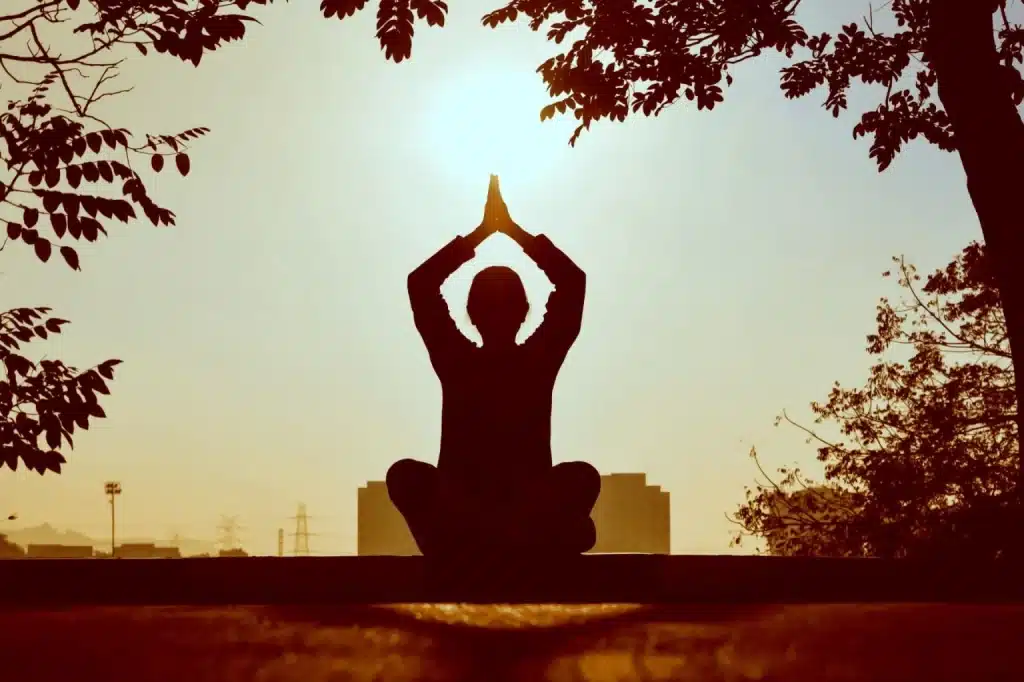The Three Path of Yoga
When it comes to choosing the right path of yoga – Karma, Gyana, or Bhakti – it is essential to consider your personal inclinations, aspirations, and spiritual needs. Each path offers a distinct approach to self-realization and a unique set of practices. Here are some insights to help you navigate and determine which path resonates with you:
Karma Yoga:
The Path of Selfless Action
Karma Yoga is the path of selfless service and action. It emphasizes performing one’s duties without attachment to the results, offering all actions to a higher power or for the benefit of humanity. If you have a natural inclination towards helping others, serving your community, or making a positive impact on the world through selfless actions, Karma Yoga might be the path for you. This path allows you to cultivate a sense of detachment from outcomes and fosters a spirit of compassion, kindness, and service. If you are physically inclined, this could be the way to go.


Gyana Yoga:
The Path of Knowledge and Wisdom
Gyana Yoga is the path of knowledge and wisdom. It involves deep introspection, self-inquiry, and the pursuit of higher truths through study and contemplation. If you have a thirst for knowledge, philosophical inquiry, and a desire to understand the nature of reality and the self, Gyana Yoga may resonate with you. This path involves studying sacred texts, engaging in philosophical discussions, and practicing self-reflection to attain spiritual enlightenment. Gyana Yoga cultivates discernment, wisdom, and the realization of the ultimate truth. If you are intellectually inclined, this could be the way to go.
Bhakti Yoga:
The Path of Devotion and Love
Bhakti Yoga is the path of devotion and love. It involves cultivating a deep and heartfelt connection with a chosen deity, guru, or the divine within. If you are naturally inclined towards expressing your emotions, developing a personal relationship with the divine, and experiencing a sense of surrender and devotion, Bhakti Yoga might be the path for you. This path incorporates practices such as prayer, chanting, singing devotional songs, and engaging in rituals that foster love, surrender, and devotion towards a higher power. If you are emotionally oriented, this could be the way to go.


While understanding the essence of each path is important, it is essential to remember that these paths are not mutually exclusive. They are very closely intertwined as it is only the first-hand experience of Karma that nurtures Gyana or knowledge and through experiential knowledge comes the acceptance of universal interconnectedness leading to Bhakti or devotion. Many practitioners integrate elements from multiple paths to create their own unique spiritual practice. It’s perfectly valid to explore and incorporate aspects of Karma, Gyana, and Bhakti Yoga into your journey, tailoring it to suit your individual preferences and needs. To determine the right path for you, consider the following:
Take time for self-reflection and introspection. Consider your natural inclinations, interests, and the qualities you resonate with the most. Reflect on whether you feel more drawn to selfless service, seeking knowledge and wisdom, or cultivating a deep connection through love and devotion.
Engage in various practices associated with each path. Attend Karma Yoga activities, participate in philosophical discussions or study groups for Gyana Yoga, and experience devotional practices of Bhakti Yoga. Observe how each practice resonates with your heart, mind, and spirit.
Seek guidance from experienced teachers, mentors, or spiritual leaders who embody and teach the different paths. Their insights and wisdom can provide valuable guidance and support in choosing a path that aligns with your aspirations.
Ultimately, trust your inner guidance and intuition. Pay attention to how you feel during and after engaging in practices from each path. Notice which path brings you a sense of fulfilment, connection, and growth. Trust that your inner wisdom will guide you towards the right path for your spiritual journey.
Remember, the paths of Karma, Gyana, and Bhakti Yoga are not mutually exclusive, and you can incorporate elements from each path into your practice. Embrace the journey of self-discovery and be open to the evolution of your spiritual path over time. The most important aspect is to engage in a practice that resonates deeply with your heart and supports your spiritual growth and well-being. May your exploration lead you to the path that brings you the greatest joy, fulfilment, and realization of your true Self.
Namaste.
- Patanjali’s Prayer Invocation
- What is Yoga
- History of Yoga
- Philosophy
- The 8 Limbs of Yoga
- Three Margas(Paths) of Yoga
- Asanas
- Prayanama
- Meditation
- Significance of Mudras
- Seven Chakras: An Ancient Guide to Modern Living
- Evolution & Lineages
- Yoga Masters
- Guru – Shishya Relationship
- Patanjali’s Yoga Sutras
- The Shrimad Bhagavad Gita
